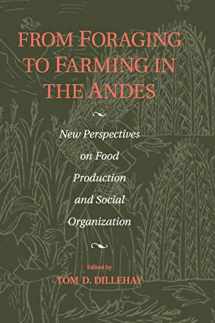
From Foraging to Farming in the Andes: New Perspectives on Food Production and Social Organization
ISBN-13:
9781107005273
ISBN-10:
1107005272
Edition:
1
Author:
Tom D. Dillehay
Publication date:
2011
Publisher:
Cambridge University Press
Format:
Hardcover
380 pages
Category:
Native American
,
Americas History
,
Prehistory
,
Ancient Civilizations History
FREE US shipping
Book details
ISBN-13:
9781107005273
ISBN-10:
1107005272
Edition:
1
Author:
Tom D. Dillehay
Publication date:
2011
Publisher:
Cambridge University Press
Format:
Hardcover
380 pages
Category:
Native American
,
Americas History
,
Prehistory
,
Ancient Civilizations History
Summary
From Foraging to Farming in the Andes: New Perspectives on Food Production and Social Organization (ISBN-13: 9781107005273 and ISBN-10: 1107005272), written by authors
Tom D. Dillehay, was published by Cambridge University Press in 2011.
With an overall rating of 3.5 stars, it's a notable title among other
Native American
(Americas History, Prehistory, Ancient Civilizations History) books. You can easily purchase or rent From Foraging to Farming in the Andes: New Perspectives on Food Production and Social Organization (Hardcover) from BooksRun,
along with many other new and used
Native American
books
and textbooks.
And, if you're looking to sell your copy, our current buyback offer is $0.3.
Description
Archeologists have always considered the beginnings of Andean civilization from ca. 13,000 to 6,000 years ago to be important in terms of the appearance of domesticated plants and animals, social differentiation, and a sedentary lifestyle, but there is more to this period than just these developments. During this period, the spread of crop production and other technologies, kinship-based labor projects, mound-building, and population aggregation formed ever-changing conditions across the Andes. From Foraging to Farming in the Andes proposes a new and more complex model for understanding the transition from hunting and gathering to cultivation. It argues that such developments evolved regionally, were fluid and uneven, and were subject to reversal. This book develops these arguments from a large body of archaeological evidence, collected over 30 years in two valleys in northern Peru, and then places the valleys in the context of recent scholarship studying similar developments around world.


We would LOVE it if you could help us and other readers by reviewing the book
Book review

Congratulations! We have received your book review.
{user}
{createdAt}
by {truncated_author}


